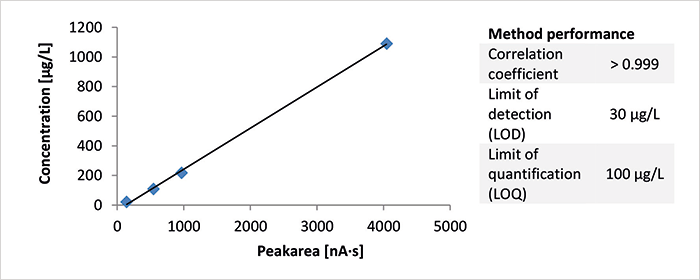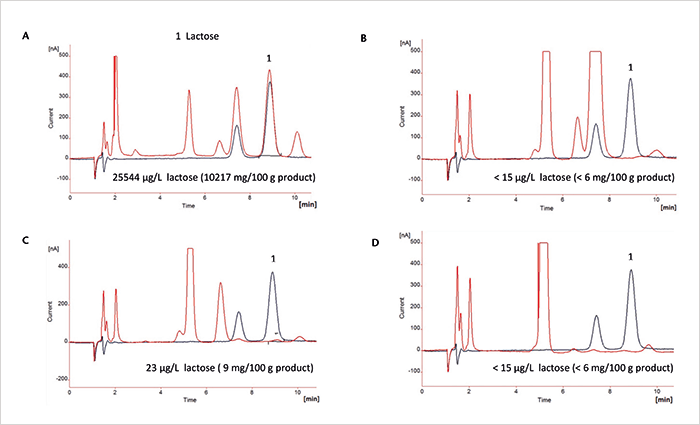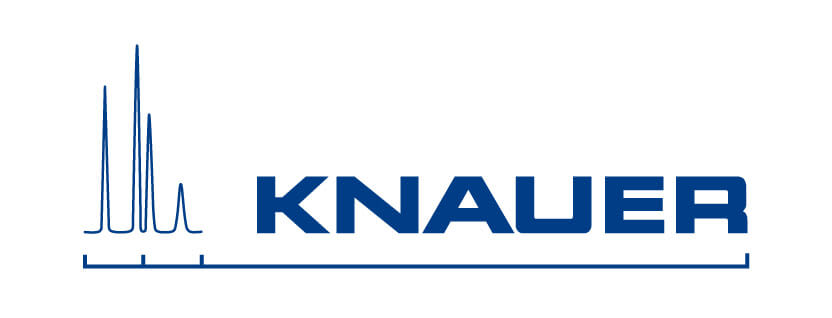Special methods and systems are needed because classical determination of sugars in food products with RI detection is far too insensitive for this case. An HPLC method that easily reaches the required limit of detection (LOD) by using high-performance anion-exchange chromatography coupled to pulsed amperometric detection (HPAEC-PAD) is presented. After calibration, several food products were analysed to determine the lactose content.

Method: The system consists of a KNAUER AZURA analytical HPLC system coupled to a DECADE II electrochemical detector. A biocompatible HPLC system was used in order to eliminate the necessity of regular passivation. The mobile phase (30 mM NaOH) was continuously sparged with helium to keep it inert. The applied anion exchange column (RCX-10, 7 µm, 250 x 4.6 mm) was stored in the tempered section of the DECADE II detector. The isocratic separation was carried out at 2ml/min and 30°C (column and flow cell). Injection volume was 50 µl.


Results: A mixture of three sugars was analysed exemplarily and calibration was carried out for lactose (Figure 1). The analysis of four food samples from typical German food (Figure 2) shows that three of them were lactose-free even according to the new lactose limits given by the EU. The chicken skewers sample contained substantial amounts of lactose and could not be sold as lactose-free. The chromatograms show only little interfering matrix peaks, so that the analytes could be well separated and identified. Conclusion The presented method of HPAEC-PAD on a KNAUER HPLC system proved to be well-suited to determine low limits of sugars in food products. The detection principle was quite specific for sugars and only showed very little interference by matrix peaks. Using the AZURA analytical system combined with the DECADE II electrochemical detector, the analysis of lactose in lactose-free labelled products can be carried out in a robust and reproducible manner.
References
- EFSA Journal 2010; 8(9):1777 http://www.efsa.europa.eu/de/scdocs/doc/1777.pdf





